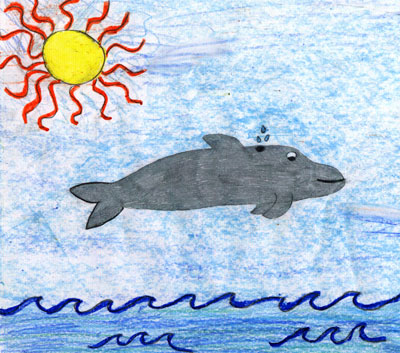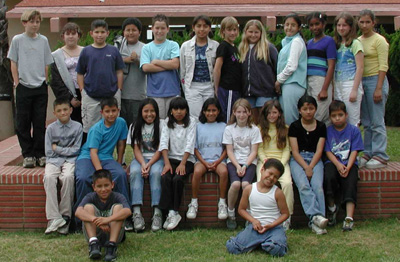|
Welcome to the Monroe School Web Page for Mrs. Pisacane's class!

Our motto is: Care for the endangered, love & respect all animals

These are the up and coming ecologists from Monroe School

An interview with our ecologists
Helen Regan grew up and studied in Australia. She studied mathematics at university but has been working in conservation biology and ecology for 4 years. She uses her math background to write population models for endangered species, to see what sorts of management plans will have the best chance of improving the survival of endangered species. She has worked mainly on endangered Australian plants and snails but is now working on conservation issues in California. Helen became interested in conservation biology and ecology because the mathematical applications are very interesting and a lot of fun. She also wanted to put her mathematical skills to good use for people and the environment.
Toni Mizerek was born in Huntington Beach, California and she has spent most of her life in California. She just graduated from UCSB in June 2000 studying ecology. Toni now works at NCEAS, the ecology center for UCSB. Toni has spent a lot of time on Santa Cruz, one of the Channel Islands off of Santa Barbara. When she's out on the island, she leads hikes and teaches all the visitors about how unique the Channel Islands are. These islands are some of the greatest natural places to visit around our area and look very different from Santa Barbara. Toni has been able to travel with school classes to Utah, Arizona and northern California to study different environments. She became interested and learned about ecology by being curious about the environment and watching animals interact with others and their environment. In her free time she enjoys being outside and playing sports.

Our Experiment
Helen and Toni focused on conservation biology when they met with the Monroe class. The class learned about endangered and extinct species and we went over some exercises so that everyone could get a visual picture of how population sizes fluctuate. During the few visits the students and the ecologists talked about California Condors, Humpback Whales and a little about the Island Foxes. For the class experiment, the students all used dice to represent Condors, an endangered species, We tracked a population over time, both with and without conservation strategies. Each number on the dice represented a Condor living to another year, a way that Condors may die or a birth in the population. We identified threats to endangered Condors and incorporated those into the dice game. Starting with 6 different populations of 15 Condors each, all populations except 1 died within 5 years. We discussed ways to help save the Condors and reduce the risk of extinction. When conservation strategies were implemented, all of the Condor populations grew rather quickly and were expected to live.
 
|

